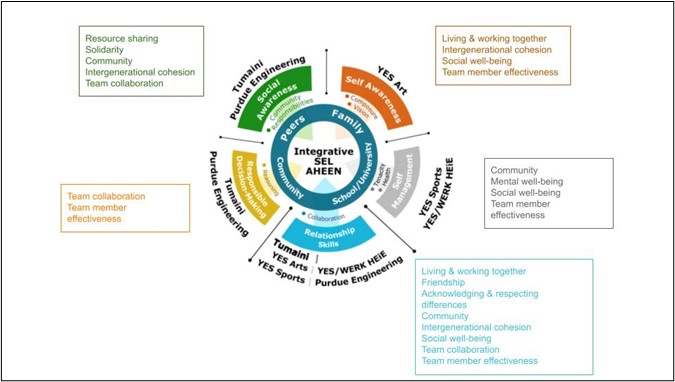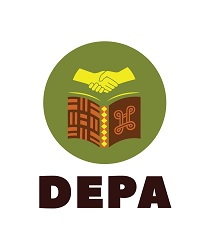Peacebuilding Through Higher Education in Emergencies
Project Introduction
The Kenyan project was led by Professor Barbara Moser-Mercer and saw a collaboration between The African Higher Education in Emergencies Network (AHEEN), Women Educational Researchers of Kenya (WERK) and Youth Education & Sports (YES).
In this project, we aimed to empower youth in protracted and acute conflict settings to participate in bringing about constructive change at the local level using our pedagogical model of Integrative Social‑Emotional Learning (Integrative SEL). This approach was supported by a human‑development‑oriented framework for educating people about peace and social justice issues through social integration as a precursor to social cohesion.
The Integrative SEL model was delivered in two contexts: first, as a required module for students participating in AHEEN’s formal higher education programme in the Kakuma/Kalobeyei refugee camp in Kenya; and second, as part of AHEEN’s non‑formal higher education intervention supporting the Tigray emergency response in the Tunaydbah and Um Rakuba refugee camps in Sudan.

By addressing physical and emotional well-being through a combination of sports and applied arts program components around a core component of community engineering, the Integrative SEL approach capitalised on the knowledge and peace-building potential of local actors, responds flexibly to both protracted as well as acute emergencies and provides participants with the foundational skill sets with which to rebuild their communities, whether in displacement or upon repatriation. Leveraging the arts, sports and engineering sciences addresses the key needs of communities in displacement and has the potential to set in motion more transformational processes that go beyond maintaining security or ensuring stabilisation, in that they recognise the identities of marginalised groups and contribute to rectifying social and cultural inequalities in refugee-hosting countries.
Project Methodology
The Applied Arts component of the Integrative SEL (Social Emotional Learning) model focuses on applied arts practitioner training which encourages participants in responsible citizenship by fostering opportunities for them to serve as ambassadors to their communities through the development and implementation of regular creative projects. The refugee-driven creative projects, which use the Arts to focus on finding shared narratives as well as exploring and celebrating narratives of difference, are peacebuilding in nature. They allow learners to build the skills they need and apply them within their communities.
The Arts projects connect people constructively by giving them a shared goal in the creative processes, and empower communities to create positive and peaceful linkages and connections between diverse individuals and across languages and cultures. The Arts honour everyone’s uniqueness and level the group as they gather around a common goal of creation.
As they learn to listen, communicate clearly and respectfully, compromise, and resolve conflicts within the creative process, they develop the transferrable skills needed for creating outside peaceful communities that are equipped to resolve conflicts.
Applied arts practitioners will complete a course composed of 3 modules:
- Facilitation Theory
- Evaluation
- Reflection


.jpg)